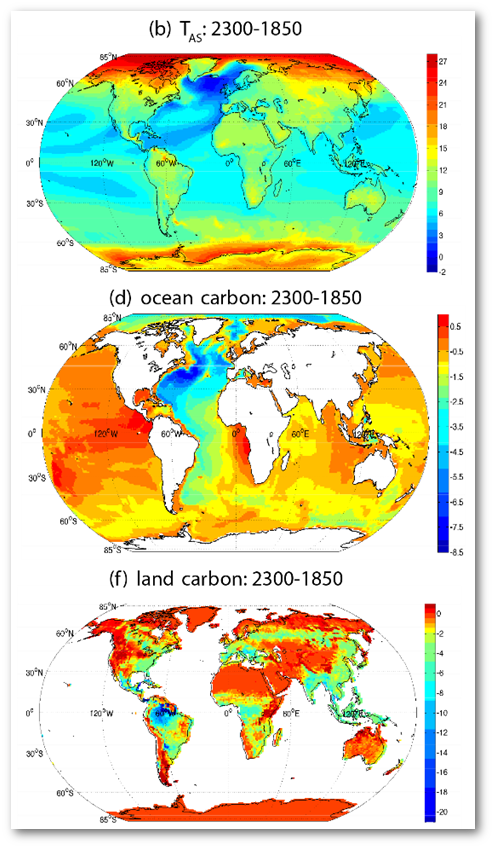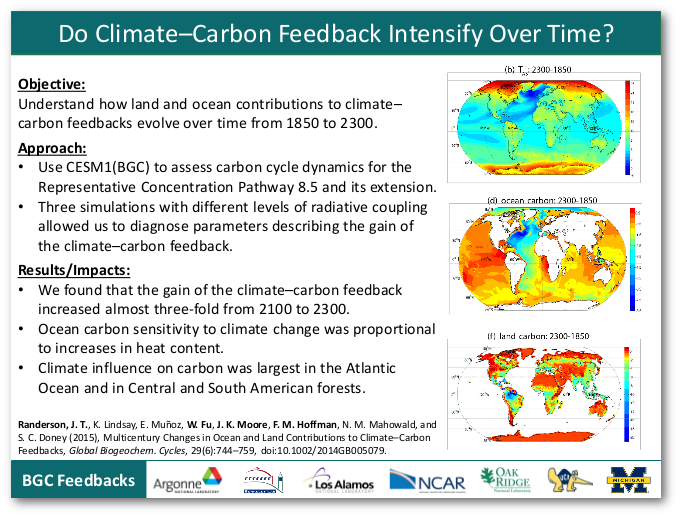Research Highlights
Do Climate–Carbon Feedbacks Intensify over Time?
June 1, 2015
Objective
Understand how land and ocean contributions to climate–carbon feedbacks evolve over time from 1850 to 2300.
Approach
- Use CESM1(BGC) to assess carbon cycle dynamics for the Representativeness Concentration Pathway 8.5 and its extension.
- Three simulations with different levels of radiative coupling allowed us to diagnose parameters describing the gain of the climate–carbon feedback.
 |
Changes in (b) surface air temperature, (d) ocean carbon storage, and (f) land carbon storage from 1850 to 2300 from the fully coupled simulation performed in this study. |
Results/Impacts
- We found that the gain of the climate–carbon feedback increased almost three-fold from 2100 to 2300.
- Ocean carbon sensitivity to climate change was proportional to increases in heat content.
- Climate influence on carbon was largest in the Atlantic Ocean and in Central and South American forests.
Randerson, James T., Keith Lindsay, Ernesto Muñoz, Weiwei Fu, J. Keith Moore, Forrest M. Hoffman, Natalie M. Mahowald, and Scott C. Doney. June 1, 2015. “Multicentury Changes in Ocean and Land Contributions to the Climate–Carbon Feedback.” Global Biogeochem. Cycles, 29(6):744–759. doi:10.1002/2014GB005079.
